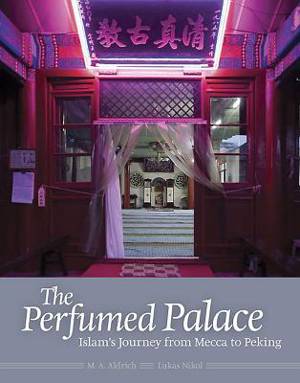
- Afhalen na 1 uur in een winkel met voorraad
- Gratis thuislevering in België vanaf € 30
- Ruim aanbod met 7 miljoen producten
- Afhalen na 1 uur in een winkel met voorraad
- Gratis thuislevering in België vanaf € 30
- Ruim aanbod met 7 miljoen producten
Zoeken
The Perfumed Palace
Islam's Journey from Mecca to Peking
Lukas Nikol, M A Aldrich
Hardcover | Engels
€ 83,45
+ 166 punten
Omschrijving
While it is not widely known, Islam first arrived in China in the 7th century CE and rapidly became an integral part of China's social fabric. By 996 CE, Muslims had established a presence in Beijing (which we call "Peking" because of its classical resonance), and so began a process of blending so far-reaching that today, casual observers of northern China, whether Chinese, Muslim or Western, might be completely unaware of their existence. Loosely themed around the Five Pillars of Islam, The Perfumed Palace explores the life and culture of the Muslims of China's capital city who, over the centuries, have developed such a harmonious synthesis of two great civilizations. Accompanying the text are more than 100 color photographs taken by photographer Lukas Nikol on visits to the Muslim Quarter in Peking and to the Muslim villages that dot the countryside in its outlying counties. The photographs encompass everything from daily life, festivals, markets, schools, mosque architecture and numerous other leitmotifs of the capital's Muslims. Several 1930s black-and-white photographs from the Harvard-Yenching Library add a further historical dimension to this visual depiction of Muslim Peking. The book is completed by specially commissioned reproductions of sini calligraphic scrolls, a form of Arabic calligraphy that incorporates Chinese-style brush strokes in a vertical format, like traditional Chinese writing. These breath-taking combinations of Arabic and Chinese calligraphy are an art form unknown outside China.
Specificaties
Betrokkenen
- Auteur(s):
- Uitgeverij:
Inhoud
- Aantal bladzijden:
- 304
- Taal:
- Engels
Eigenschappen
- Productcode (EAN):
- 9781859642276
- Verschijningsdatum:
- 1/03/2010
- Uitvoering:
- Hardcover
- Formaat:
- Genaaid
- Afmetingen:
- 163 mm x 208 mm
- Gewicht:
- 725 g

Alleen bij Standaard Boekhandel
+ 166 punten op je klantenkaart van Standaard Boekhandel
Beoordelingen
We publiceren alleen reviews die voldoen aan de voorwaarden voor reviews. Bekijk onze voorwaarden voor reviews.











